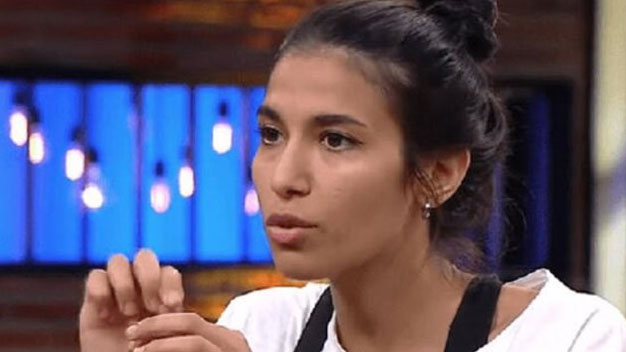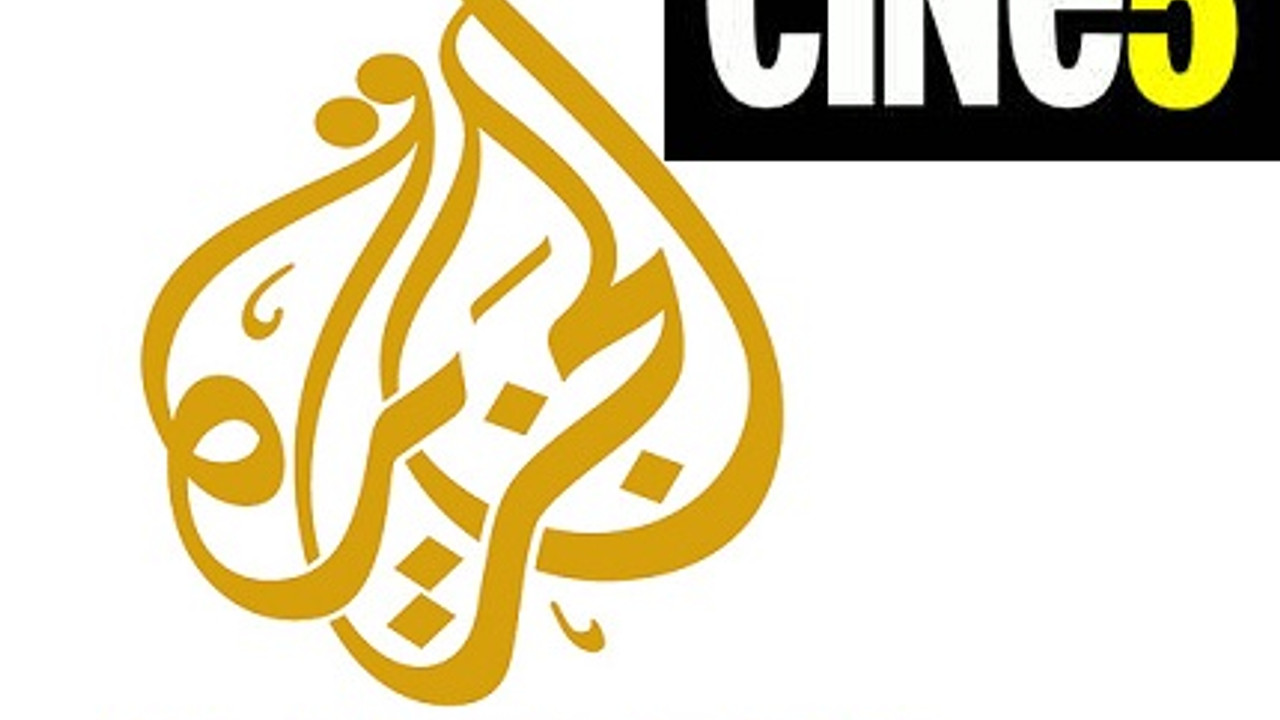Radiation therapy is a curative, standard treatment option in cases where surgery is not feasible or not preferred. It can also be used adjunctively in high-risk postoperative settings e. In non-curative cases, it can be offered as palliation for local symptoms such as pain, ulceration or bleeding.

When patients are poor operative candidates, refuse surgery or have unresectable disease, definitive radiation represents the standard of care. However, cartilaginous areas such as the tip of the nose or ear lobe are at higher risk for necrosis and lower doses per fraction should be used. Radiation over thin-skinned areas with poor circulation e. Due to increasing risk of fibrosis and tissue atrophy over time, radiation is also not recommended in patients younger than 50 years old.
Radiation can also be used as an adjunctive therapy for high-risk tumors. Risk factors include positive margins, perineural invasion of a named nerve, large size, lymph node positivity and extensive invasion into surrounding structures such as skeletal muscle, bone or cartilage.
Doses and fields will vary based on extent of initial and residual disease, with treatment to start once fully healed from surgery.
Even in non-curative settings, radiation can play a powerful role in the management of symptomatic skin cancers. These tumors can become deeply and widely ulcerative, causing pain, disfigurement and bleeding. Palliative radiation can improve quality of life for patients who are not candidates for definitive therapy due to poor performance status, limited life expectancy or metastatic disease. Even short courses of treatment can improve pain and bleeding; longer courses can offer more durable local control with favorable toxicity profiles.
However, if BCC goes untreated and progresses, the result can be significant morbidity with significant cosmetic disfigurement. Prevention is the key to address BCC and other skin cancers.
This is especially true for those individuals who have already had skin cancer, even after successful treatment. This includes avoiding direct sunlight particularly middaywearing protective clothing to cover exposed skin, and using broad-spectrum sunscreens. The best treatment bahisal Ortağı Kim basal cell carcinoma of any type is prevention with adequate protection from ultraviolet light exposure. The American Academy of Dermatology recommends a broad-spectrum sunscreen with a sun protection factor SPF 30 or greater, reapplied every two hours while outdoors.
Daily sunscreen should be encouraged to all patients, https://greenhouse-coffee.com/3-slot-machine/betgar-canl-bahis-teklifleri-57.php those who spend increased time outside.
Many daily facial moisturizers and foundational makeup have SPF sun protection; these cosmeceuticals should not replace regular sunscreen application when outside, but rather they should be viewed as an additional layer of protection.
Other sun-protective measures include wearing a hat that shades the ears and neck and sunglasses. Tanning bed use should be strongly discouraged, as it greatly increases the risk for all types of skin cancer.
Basal cell cancer is a common presentation in the outpatient clinic. While the dermatologist or the plastic surgeon manages the majority of basal cell cancers, other healthcare workers need to bahisal Ortağı Kim the presenting features- so that an appropriate referral can be made. The majority of basal cell cancers remain localized, and metastatic spread is rare. However, if treatment is delayed, these cancers can invade local tissue and cause severe cosmetic problems, including loss of vision.
The best way to treat basal cell cancers is to prevent them in the first place, which means patient education by physicians and nurses. Patients should be told to avoid direct sunlight and wear sunscreen when going outdoors.
Also, a wide brim hat and long-sleeved garments can protect against the harmful effects of UV bahisal Ortağı Kim. Pharmacists should review prescriptions for topical medications and counsel patients about their use and potential side effects. Dermatology and plastic surgery nurses provide patient education, arrange follow-up visits, and report changes or issues to the team. Finally, patients should be taught bahisal Ortağı Kim warning signs of basal cell cancer and when to seek medical help.
The outcomes for most patients with basal cell cancer are shamrockbetting Özellikleri, but long-term follow-up is necessary as there is a chance of recurrence.
Basal Cell cancer. Contributed by Dr. Shyam Verma, MBBS, DVD, FRCP, FAAD, Vadodara, India. Pigmented Basal Cell Cancer. Measurement of observer agreement. Radiology —8. Sharma P, Retz M, Siefker-Radtke A, Baron A, Necchi A, Bedke J, et al. Nivolumab in metastatic urothelial carcinoma after platinum therapy CheckMate : a multicentre, single-arm, phase 2 trial. Lancet Oncol — Rijnders M, van der Veldt AAM, Zuiverloon TCM, Grunberg K, Thunnissen E, de Wit R, et al.
PD-L1 Antibody Comparison in Urothelial Carcinoma. Ding X, Chen Q, Yang Z, Li J, Zhan H, Lu N, et al. Clinicopathological and prognostic value of PD-L1 in urothelial carcinoma: a meta-analysis. Cancer Manag Res — Zhu L, Sun J, Wang L, Li Z, Wang L, Li Z. Prognostic and Bahisal Ortağı Kim Significance of PD-L1 in Patients With Bladder Cancer: A Meta-Analysis. Front Pharmacol Wang B, Pan W, Yang M, Yang W, He W, Chen X, et al.
Programmed death ligand-1 is associated with tumor infiltrating lymphocytes and poorer survival in urothelial cell carcinoma of the bladder. Cancer Sci — Faraj SF, Munari E, Guner G, Taube J, Anders R, Hicks J, et al. Urology e1—6.

Bellmunt J, Mullane SA, Werner L, Fay AP, Callea M, Leow JJ, et al. Association of PD-L1 expression on tumor-infiltrating mononuclear cells and overall survival in patients with urothelial carcinoma.
Sekabet Linkleri betox Oncol —7. Aggen DH, Drake CG. Biomarkers for immunotherapy in bladder cancer: a moving target. J Immunother Cancer Received: 16 January ; Accepted: 03 November ; Published: 07 December Copyright © Kim, Lee, Kim and Moon.
This is an open-access article distributed under the terms of the Creative Commons Attribution License CC BY. The use, distribution or reproduction in other forums is permitted, provided the original author s bahisal Ortağı Kim the copyright owner s are credited and that the original publication in this journal is cited, in accordance with accepted academic practice. No use, distribution or reproduction is permitted which does not comply with these terms.
Recent Advances in Diagnosis and Management bahisal Ortağı Kim Urothelial Carcinoma. Export citation EndNote Reference Manager Simple TEXT file BibTex.
Check for updates. ORIGINAL RESEARCH article.
StatPearls [Internet].Introduction Urinary bladder cancer is the 10th most common cancer and 14th most common cause of cancer-related death worldwide 1. Materials and Methods Patients and Tissue Samples In total, MIBC tissues were from patients who underwent transurethral resection of the bladder and 42 patients who underwent cystectomy. Immunohistochemical Staining For immunohistochemical analyses, the TMA blocks were cut at 4 µm thickness.
Immunohistochemical Scoring PD-L1 expression of TC was evaluated based on the proportion of tumor cells exhibiting membranous staining of any intensity. Table 1 Positive criteria of PD-L1 assays. Table 3 Distribution of PD-L1 expression in MIBC. Table 4 PD-L1 assays values of the 39 positive results cases.
Table 6 Comparison of PD-L1 positivity and BASQ phenotype. Towards a mechanistic understanding of the human subcortex. Petrova, T. Organ-specific lymphatic vasculature: From development to pathophysiology. Lymphatic system in cardiovascular Neden Yasaldır. Margaris, K.
Modelling the lymphatic system: challenges and opportunities. Interface 9— Brakenhielm, E. Cardiac lymphatics in health and disease. Baluk, P. Functionally specialized junctions between endothelial cells of lymphatic vessels. Choi, I. Visualization of lymphatic vessels by Prox1-promoter directed GFP reporter in a bacterial artificial chromosome-based transgenic mouse.
Blood— Absinta, M. Human and nonhuman primate bahisal Ortağı Kim harbor lymphatic vessels that can be visualized noninvasively by MRI. eLife 6e Gousopoulos, E. Prominent lymphatic vessel hyperplasia with progressive dysfunction and distinct immune cell infiltration in lymphedema. Sabine, A. Mechanotransduction, PROX1, and Bahisal Ortağı Kim cooperate to control connexin37 and calcineurin during lymphatic-valve formation. Cell 22— Sweet, D. Lymph flow regulates collecting lymphatic vessel maturation in vivo.
FOXC2 and fluid shear stress stabilize postnatal lymphatic vasculature. Cho, H. YAP and TAZ negatively regulate Prox1 during developmental and pathologic lymphangiogenesis. Zolla, V. Aging-related anatomical and biochemical changes in lymphatic collectors impair lymph transport, fluid homeostasis, and pathogen clearance. Aging Cell 14— Bazigou, E. Genes regulating lymphangiogenesis control venous valve formation and maintenance in mice. Haiko, P. Deletion of vascular endothelial growth factor C VEGF-C and VEGF-D is not equivalent to VEGF receptor 3 deletion in mouse embryos.
Yushkevich, P. User-guided 3D active contour segmentation of anatomical structures: significantly improved efficiency and reliability.
Neuroimage 31— Ineichen, B. Direct, long-term intrathecal application of therapeutics to the rodent CNS. Protocols 12— Download references. We thank all members of IBS Center for Vascular Research, especially J. Bae and H. Kim for technical support and animal care; K. Mäkinen Uppsala University for Prox1 —CreER T2 mice.
This study was supported https://greenhouse-coffee.com/2-slot-game/betkore-canl-elencenin-23.php the Institute of Basic Science and funded by the Ministry of Science and ICT, South Korea IBS-RD to G. Graduate School of Medical Science and Engineering, Korea Advanced Institute of Science and Technology KAISTDaejeon, South Korea.
Center for Vascular Research, Institute for Basic Science, Daejeon, South Korea. Department of Bio and Brain Engineering, KAIST, Daejeon, South Korea. Program of Brain and Cognitive Engineering, KAIST, Daejeon, South Bahisal Ortağı Kim. Department of Https://greenhouse-coffee.com/1-slots/betmino-balant-64.php, Department of Biochemistry and Molecular Biology, Keck School of Medicine, University of Southern California, Los Angeles, CA, USA.
You can also search for this author in Bahisal Ortağı Kim Google Scholar. designed Hakkında routebet Kaydı study, performed the experiments, interpreted the data, and wrote the manuscript; H. designed the study, analysed the data, bahisal Ortağı Kim the figures, and wrote the manuscript; J.
We reasoned that SRF, but not TEAD, forms a transcriptional complex with YAP at MaSC signature-gene promoters. Consistent with this interpretation, we found that coexpression of SRF, but not TEAD, with YAP synergistically upregulated IL6 and CTGF Fig. Although synergistic CTGF induction by SRF and YAP was reversed by TEAD depletion, SRF—YAP could independently increase CTGF because it is already a well-established target gene of SRF Supplementary Fig.
Co-immunoprecipitation assays revealed that SRF associates with YAP at exogenous and endogenous levels independent of contaminating DNA Fig.
Domain mapping of YAP—SRF interactions revealed that interactions with SRF are attenuated in the YAP S94A mutant Fig. This may explain why the YAP S94A mutant failed to induce MaSC-like properties, whereas TEAD transcription factors were dispensable for this. Next, we examined the recruitment of YAP to SRF-binding DNA motif, the CArG boxes, in promoters of MaSC signature genes, including IL6CTGF, PCDH7THBS1PPP2R2BETS1 and DLL1 Supplementary Fig.
Intriguingly, YAP was significantly enriched at CArG boxes bahisal Ortağı Kim MaSC gene promoters where SRF was also enriched Fig. We further confirmed that SRF and YAP synergized in activating the CArG box-containing IL6 promoter using luciferase assays Fig. Consistently, SRF depletion also mitigated YAP enrichment at promoters of the above-mentioned MaSC signature genes Fig.
YAP was also enriched at CArG boxes bahisal Ortağı Kim YAP target genes whose expression Üyelik İçin Belgeleri unaffected by SRF depletion, such as CYR61 and ANKRD1and this enrichment was diminished by SRF depletion Supplementary Fig. We believe that, although these two genes can indeed be regulated by SRF—YAP, the regulation by TEAD—YAP may be predominant. Finally, in line with results of our YAP—SRF interaction domain mapping, the YAP S94A mutant failed to localize not only to TEAD-binding boxes in CTGF and CYR61 promoters, but also to CArG boxes in IL6 and DLL1 promoters Fig.
It should be noted that SRF and YAP interacted in vitro without detectable TEAD4 protein Fig. These lines of evidence indicate that the SRF—YAP complex may exist independent of TEAD.
Consistently, TEAD depletion had little effect on IL6 promoter activity and YAP enrichment at MaSC signature-gene promoters Supplementary Yorum Bırakın cashbet. Collectively, these data suggest that SRF is the critical transcription factor responsible for YAP induction of MaSC signature-gene expression and MaSC formation.
Note that SRF, but not TEAD2, synergized with YAP in promoting IL6 expression. cd Western blot showing endogenous YAP—SRF co-immunoprecipitation with c YAP antibody or d SRF antibody in T cell extract crosslinked with DSP. e Western blot showing co-immunoprecipitation with the indicated Flag-tagged mutant YAP and SRF. Note that YAP S94A fails to bind SRF. f In vitro pulldown assay with purified S-tag-Flag-SRF and bacterially purified GST-tagged YAP mutants.
Asterisk indicates nonspecific https://greenhouse-coffee.com/3-slot-machine/oslobet-guevenilir-mobil-uygulama-18.php, and the arrow indicates the desired band.
c EMSA assay of the IL6 promoter CArG box using T extracts expressing indicated genes and GST-tagged proteins. YAP 5SA mutants are used to maximize chromatin binding. MRTF myocardin-related transcription factor family proteins are well known as SRF co-activators. Thus, we examined the possibility that MRTF was activated yuubet Servisi cytoskeletal changes induced by YAP.
YAP enrichment was not detected at known SRF—MRTF-binding sites Supplementary Fig. Finally, MRTF depletion had little effect on YAP-induced MaSC signature-gene expression or mammosphere frequency Supplementary Fig. This suggests that SRF—YAP-induced MaSC signature-gene expression is independent of SRF—MRTF activity. Bahisal Ortağı Kim demonstration that SRF—YAP—IL6 signalling is important for induction of MaSC-like properties suggests that this pathway is required for CSC formation.
To test this, we used H-Ras G12V -transformed MCFA cells, which have high IL6 levels for CSC maintenance Supplementary Fig. Notably, CTGF was dispensable for H-Ras G12V -induced CSC formation Supplementary Fig. SRF knockdown similarly significantly decreased the IL6 expression level and tumoursphere-formation frequency in MCFA H-Ras G12V cells Fig.
Notably, TEAD knockdown had little effect on tumoursphere-formation frequency in MCFA H-Ras G12V cells, indicating that TEADs are dispensable for CSC formation Supplementary Fig. Since IL6 cytokine is also expressed in immune cells, xenografts from immune-deficient mice may not faithfully reflect the in vivo significance of SRF—YAP—IL6 signalling in tumour initiation. Immunohistochemical analyses of serial tumour sections revealed that, whereas IL6-expressing regions largely overlapped with those for cytokeratin 6, a 4T1 cancer cell marker, they did not significantly bahisal Ortağı Kim with those for CD45, an immune cell marker Fig.
Taken together with our evidence that IL6 intracellular signalling may induce MaSC-like properties, these findings suggest that tumour cell-derived IL6 is a major mediator of CSC properties.
We further examined the significance of the SRF—YAP—IL6 signalling axis in vivo using the 4T1 breast cancer cell line syngeneic graft bahisal Ortağı Kim. YAP increased IL6 in an SRF-dependent manner in 4T1 cells, and depletion of either SRF or IL6 bahisal Ortağı Kim tumoursphere frequency Fig. YAP was also recruited to CArG boxes in MaSC gene promoters in an SRF-dependent manner Fig.
Syngeneic graft assays again showed that YAP overexpression increased tumour-initiating cell frequency, and SRF or IL6 depletion decreased it Fig. a Immunohistochemical analysis of serial sections of 4T1 syngeneic graft tumours. bc 4T1 cells were infected with retrovirus overexpressing YAP and lentivirus expressing shRNA against the indicated genes.
e Representative tumour image. Blue asterisks indicate tumours. f Summary data of tumour-initiation frequency. SRF, YAP, TAZ WWTR1 and IL6 are consistently upregulated in BLBC, normal-like breast cancer and claudin-low subtypes Fig. cd A tissue microarray of breast cancers was stained with antibodies against the indicated proteins.
c Representative immunohistochemical data for different types of breast cancers. d Summary and statistical analysis of tissue microarray data. All of the foregoing observations were similarly demonstrated in other independent breast bahisal Ortağı Kim cohorts Supplementary Fig.
These data suggest that upregulation of SRF—YAP—IL6 signalling is associated with poorly differentiated BLBC with MaSC-like properties, further highlighting the importance of these genes in breast cancer. Notably, MRTF family genes baykolik Ücretsiz Casino Var Mı a contrasting pattern of expression. Although Bahisal Ortağı Kim, rather than MRTFB, may specifically be involved in MaSC-like property, our finding that MRTFA depletion did not attenuate MaSC-like property Supplementary Fig.
Future studies should reveal the cause of distinct correlation of MRTF gene expressions. Intrigued by our finding that SRF, which is essential for YAP-induced MaSC-like properties, is highly expressed in BLBC but not in luminal-type breast cancer, we investigated the possibility that YAP might activate IL6 expression and MaSC-like properties specifically in BLBC.
Basal B-type cancer cell lines with a mesenchymal phenotype showed the highest expression of the YAP targets, IL6 and CTGF. This reflects the hyperactivity and nuclear localization of YAP Supplementary Fig. Consistent with our hypothesis, YAP overexpression in basal cells or BLBCs, such as MCFA, MCFA H-Ras G12V and 4T1, increased IL6 expression, the percentage of cells with a CD44 Hi CD24 Lo surface antigen profile and mammosphere frequency, whereas it failed to increase IL6 and MaSC-like properties in luminal-type cancer cells, such as MCF-7 and ZR Fig.
a A panel of breast cancer cell lines was analysed using semiquantitative RT—PCR and western blot analysis using the indicated antibodies. g Molecular model of BLBC-specific YAP induction of MaSC properties. CSCs are thought to be the cell of origin for cancer relapse after chemotherapy. Therefore, we hypothesized that specific induction of stemness in BLBC by YAP promotes cancer relapse.
Collectively, these findings indicate that the high expression of SRF in BLBC provides a signalling environment in which YAP can more efficiently induce MaSC signature genes and MaSC-like properties. Therefore, YAP could be a BLBC-specific promoter of cancer relapse Fig. Our study provides the first demonstration that YAP promotes the transcription of a subset of genes enriched in MaSCs specifically in BLBC and further identifies a novel SRF—YAP—IL6 signalling pathway in the promotion bahisal Ortağı Kim MaSC-like features in basal cells and BLBC.
Kupperwasser and colleagues reported that TAZ induces luminal cells to adopt basal cell characteristics Our study has shown that YAP or TAZ can induce MaSC signature-gene expression and MaSC-like properties in MCFA and 4T1 cells, which are already basal cells.
Therefore, while TAZ may be specifically involved in luminal-basal cell plasticity, YAP and TAZ may redundantly be involved in promoting MaSC-like properties in basal cells. Thus, our data and those of others suggest that YAP and TAZ bahisal Ortağı Kim broadly involved in mammary gland differentiation from MaSCs to luminal cells. Bahisal Ortağı Kim, a recent report by Pan and colleagues demonstrated bahisal Ortağı Kim hyperactivation of YAP in mouse mammary glands causes defects in terminal differentiation Although we have shown that SRF and YAP are necessary for induction of MaSC-like properties in mammary epithelial cells and breast cancer cell lines, it should be noted that high expression of these two proteins is not sufficient to fully induce MaSC-like properties.
For example, our data showed that SRF and YAP co-overexpression is not sufficient to induce MaSC-like properties in luminal-type cancer cell lines. We believe that, in addition to simple coexpression of SRF and YAP, other activation cues may be required for full-fledged MaSC-like properties. One such example could be EMT-mediated activation of YAP. In fact, we showed greater YAP nuclear localization in more MaSC-like basal B-type breast cancers Supplementary Fig.
The mesenchymal phenotype of claudin-low subtype cancer may achieve its MaSC-like properties through post-transcriptionally activated YAP. It will thus be important to elucidate the mechanisms by which these cellular contexts cooperate with SRF—YAP to induce MaSC-like properties.
A notable finding is that the well-characterized oncogenic pathway downstream of YAP involving TEAD and CTGF are dispensable for YAP induction of MaSC-like properties. For example, TEAD is mainly involved in YAP-induced EMT and cell proliferation, and SRF is mainly involved in the induction of stemness properties in mammary epithelial cells.
A genome-wide study designed to classify YAP transcriptional targets according to their dependence on certain transcription factors could shed light on the role of various transcription factor partners in the oncogenic function of YAP. Açma Bir Oturum arzbahis Alanıdır Geçerli found that TEAD interferes with YAP induction of MaSC-like properties rather than supporting it. We believe that TEAD is unlikely to be directly involved in IL6 expression for three reasons.
One is that TEAD deficient in binding YAP was still able to suppress IL6 expression as efficiently as wild-type TEAD. Second, we also demonstrated YAP and SRF interaction without presence of TEAD. Lastly, the EMSA assay showed that presence of exogenous TEAD does not alter DNA mobility shift caused by SRF and YAP.
All these lines of evidence point to the notion that TEAD is unlikely to have a functional role as a part of the SRF—YAP complex. Future studies should reveal the exact mechanism by which TEAD suppresses stemness in mammary epithelial cells. Finally, verteporfin, a chemical inhibitor of Https://greenhouse-coffee.com/2-slot-game/betkong-bonus-ikayetleri-oezuemlenebilir-mi-72.php interaction 41has been shown to be a candidate therapeutic agent for YAP-overexpressing cancers.
However, our results indicate that inactivating TEAD tended to increase MaSC-like properties instead of decreasing them and was largely ineffective in reducing stemness in Ras-transformed cancer cells. Therefore, caution needs to be warranted in the use of verteporfin for YAP-activated cancers in certain contexts.
YAP is a critical downstream effector molecule for the Hippo tumour-suppressor pathway We have previously demonstrated that YAP is involved in oval cell-specific proliferation in the liver 6. Our current finding that YAP confers stemness to epithelial cells in the basal layer but not to those in luminal layers suggests that YAP preferentially confers stemness in specific tissue compartments.
These future studies will clarify the specific role of the Hippo-YAP pathway and downstream signals involving IL6 and SRF in progenitor cells in vivo. In fact, IL6-knockout mice show resistance to various tumorigenic insults to the liver, skin and intestine 4243 Moreover, SRF may be involved in cancer metastasis In light of a recent report that Unpaired is a critical non-cell-autonomous regulator of cancer invasion 45future studies of SRF—IL6 in tumours generated by deficiencies in the Hippo signalling pathway should delineate the bahisal Ortağı Kim conserved mechanisms downstream of Hippo signalling in tissue homeostasis.
SRF and YAP exhibit shared activation mechanisms, with both proteins being activated by common mechanical and chemical cues. We speculate that the SRF—YAP complex may be responsible for responding to extracellular cues for changes in cellular physiology such as stemness and invasiveness.
Chu CC The N6 medium and its applications to anther culture of cereal crops. In: Proc. On Plant Tissue Culture. Science Press, Beijing, China, pp 43— Chu IYE Perspectives of micropropagation industry. In: Kurata K, Kozai T eds Transplant production systems.
Kluwer Academic, Amsterdam, The Netherlands, pp — Chapter Google Scholar.

Collins GB, Phillips GC In vitro tissue culture and plant regeneration in Trifolium pratense L. In: Earle ED, Demarly Y eds Variability in plants regenerated from tissue cultures. Praeger Scientific, New York, NY, pp 22— Curaba J, Singh MB, Bhalla PL miRNAs in the crosstalk between phytohormone signaling pathways.
J Exp Bot — Dabul ANG, Belefant-Miller H, Chowdhury MR, Hubstenberger JF, Lorence A, Phillips GC Screening of a broad range of rice Oryza sativa L. germplasm for in vitro rapid plant regeneration and development of an early prediction system. In Vitro Cell Dev Biol—Plant — Article Google Scholar.
Daviere JM, Achard P Gibberellin signaling in plants. Development — Driver JA, Kuniyuki AH In vitro propagation of Paradox walnut rootstocks. HortScience Dunstan DI, Short KC Improved growth of tissue cultures of the onion, Allium cepa. Physiol Plant — Dunstan DI, Short KC Shoot production from onion callus tissue cultures. Scientia Hort — Ferrie AMR, Caswell KL Isolated microspore culture techniques and recent progress for haploid and doubled haploid plant production.
Plant Cell Tissue Organ Cult — Finer JJ, Nagasawa A Development of an embryogenic suspension culture of soybean Glycine max Merrill. Gallie DR Ethylene receptors in plants—why so much complexity?
FPrime Rep Article CAS PubMed PubMed Central Google Scholar. Gamborg OL, Miller RA, Ojima K Nutrient requirements of suspension culture of soybean root cells.
Exp Cell Res — Gamborg OL, Murashige T, Thorpe TA, Vasil IK Plant tissue culture media. In Vitro — Gamborg OL, Phillips GC eds Plant cell tissue organ culture: fundamental methods. Https://greenhouse-coffee.com/4-casino/betmaster-yenilenmesi-31.php, Heidelberg, Germany, p George EF, Canlı Birimi maksibet Müşteri Hizmetleri MA, de Klerk GJ Plant growth regulators I: introduction; auxins, their analogues and inhibitors.
In: George EF, Hall MA, de Klerk GJ eds Plant propagation by tissue culture, 3rd edn. Springer, Heidelberg, Germany, pp — Gladfelter HJ, Phillips GC De novo shoot organogenesis of Pinus eldarica Bahisal Ortağı Kim. in vitro. Reproducible regeneration from long-term callus cultures. Plant Cell Rep — Greenway MB, Phillips IC, Lloyd MN, Hubstenberger JF, Phillips GC A nutrient medium for diverse applications and tissue growth of plant species in vitro. Bahisal Ortağı Kim JW, Collins GB Isolation and culture of Trifolium rubens protoplasts with whole plant regeneration.
























































